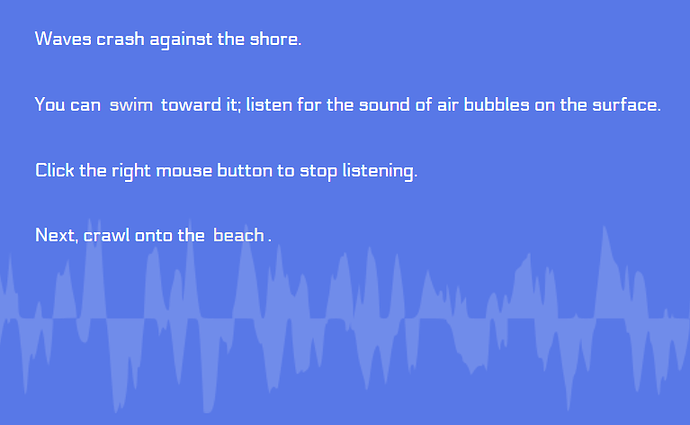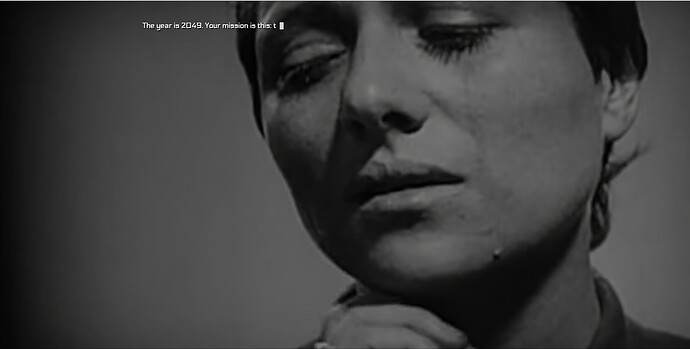I’ve played about an hour of Cygnet Committee: don’t know how far through I am, but far enough to say it’s worth checking out if you like audio games with your IF. And especially since it’s distributed as a windows executable, I want to give it some visibility.
But I *think* Mac/Linux users can run it in your browser? Worth a try.
Although I don’t know why it’s a windows executable? It says it’s in Twine, and if I use my zip utility to uncompress cygnet_unzipper_win.exe and open data/files/index.html in my browser it seems to work fine. The blurb also says that Mac and Linux versions will be coming on itch after the competition opens, but then the itch page says “available in 43 days” so maybe they’re not coming until judging is over? @pbparjeter?
Still. If you’re on Mac or Linux, try pretending the Windows .exe is a .zip file (or renaming it to .zip?) and trying to open it up the html in your browser. Might not work, but seems worth a try.
Anyway. The game. I’m not going to fold a bunch of this so you can choose not to open it, but it’s mostly mechanical stuff and very early in the game and not particularly spoilery.
This is a spy/action-movie kind of plot? You’re sneaking into a military/research complex to supposedly shut down an AI (we’ll see if that’s how it actually turns out). Whenever you go to do something, there are four audio “tracks” on the screen: you hover your mouse up and down to select and listen to one, and have to click on the one that’s different to progress.
screenshot of first audio challenge
My biggest beef with this game is that you usually have to choose the right track 3 to 5 to 7 times to advance and there’s NO PROGRESS MARKER.
a bunch of not-really-spoilery examples from the early game: read this before playing to save frustration
The game starts up and there’s only one link on screen: “open the door”. You have to click it SIX TIMES before it goes through. There’s a “clunk” sound each time you do, it’s the same each time, and you just have to keep trying until it works.
Then you have to swim to shore, with the audio tracks. Most of these will take you onward when you’ve done it enough times, but this one just keeps going until you right-click to stop listening, and then the link mysteriously works. So I don’t even know how many times you have to do it: I tried like 10 times before I gave up and canceled out and then the link appeared.
Then you get into the game and there are a couple of tasks where there’s environmental noise (waterfall, wind tunnel) so you can’t hear the choice tracks. On the waterfall I could barely hear them so I tried for a while and never got through. I assume I have to go find a way to change the environment before I can go through here (this is strongly hinted in the text) but it still just lets you try indefinitely so it’s unclear.
Also, when you click an audio track, there’s usually a success sound. And it doesn’t wait until that sound is done before it plays the new audio track again? So they overlap and usually you have to mouse around to hear the one you’re on again because you couldn’t hear it over the success sound.
Once you get past the fact that it doesn’t explain its mechanics well, it’s a location-and-object-based secret-agent game, just presented with a choice-based interface instead of a parser-based one. Think Chuk and the Arena, if you played that.
Save points are at computer terminals where you have to watch a voiced story bit with a video loop running behind it. Those are well-done, black-and-white, scanlines, heavy French accent?
screenshot of first video clip
And the story is very…weird? In the fourth or fifth location you see, there are some beans growing.
Their description is:
Most unsettling is the fact that the engineers spliced in genes from the human auditory systems to speed up growth of the plants. The marker says: “Without an actively ‘listening’ subject, human ear cells and vegetable cells are interchangeable, merely a system that will respond predictably to air vibrations as a means to an end.”
The genetically enhanced plant hybrids were in turn “canned” in metal devices. Just sentient enough to serve as the sonar cameras and touchpads that make up the base’s security system.
You would rather not think about it.
Oh, I should mention that I’ve already run into not one but two fairly tight timed sequences. Only the vertical position of your mouse matters, and there are only four tracks, so it’s not like you’re aiming at a tiny target. But if mouse speed is a problem for you, or you find timed sequences frustrating…
But otherwise this is a satisfyingly fun and weird sci-fi secret-agent game so far.


